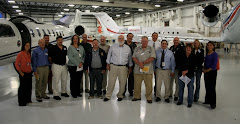Tech Ed students at Berlin High lead the way with machine project
By SCOTT WHIPPLE
Staff writer
BERLIN — Holly Robillard says she spent hours at home on school nights tossing and turning, wondering how she was going to solve certain problems.
No, the 15-year-old Berlin High School sophomore wasn’t a potential guest on Dr. Phil’s sensational TV show. She was losing sleep over "a Rube Goldberg" machine: a complicated invention she and her classmates in David Salonia’s Tech Ed class were grappling with.
Though the project was continually on her mind, Robillard says the time and effort she invested in the project was well worth her time and effort.
Robillard, who wants to pursue a career in engineering, signed up for the course because she thought the project would be interesting. She wasn’t disappointed.
"I like to design and problem-solve," she said. "My partner. Kyle Kissane, and I were assigned one part of the project. We had to incorporate as many simple machines as possible."
Robillard and Kissame started with a pulley, that turned a crank, attached to a screw, pushing a marble onward and sending it down an incline plane. There needed to be enough of a tilt to make a U for at least five seconds.
Jon Hauptfeld, 15, a sophomore, worked on another section of the project. He needed to keep the marble rolling so it would roll into a cup, forcing it down, then another section up. The eight students working on the project weren’t allowed to buy the parts; they had to use whatever Salonia had in his back room.
Last Wednesday, Salonia’s second year engineering students gave a demonstration in the high school’s media center. Their "Rube Goldberg" type machine (so named for the famous cartoonist who created odd-shaped contrivances). The system of simple machines take marbles from one place to another, finally raising a flag three feet into the air.
"We call the machine ‘SMET,’" said Salonia, "for Simple Machine Energy Transformation. My students designed, tested and built the entire machine themselves as part of an engineering activity from Project Lead the Way. It’s truly a work of ingenuity."
Lead the Way is a national initiative to "ignite immagination and innovation" in the classroom.
The class received an A for the project; each student got a grade between B plus and A. Grades are based on an rubric that demands a participant work with certain constraints. Students are asked to draw up schematics, a concept they think will work. And, they keep a journal of their progress.
Often they discovered what they had sketched out didn’t work in practice.
Salonia’s students found the project challenging and frustrating. However, they learned patience, teamwork, trial and error, and that by working together they could accomplish a lot more. The students worked in two’s. Salonia reshuffled the teams so they wouldn’t just partner with their friends.
"In the workforce you have to work with other people," Salonia said. "It may not be a person you like; you can’t always work with your friend."
The project will stay on display in the school library for a year until next year’s class builds their project. In all, there are three sections to the machine, each one, 12 inches by 12 inches. It contains levers, triggers, springs, catches seesaws, planes, while one motion activates the other.
This is the fourth year Salonia has introduced a class project.
"The kids love it; they find it challenging," he said. "Because it’s about problem-solving and teamwork they can apply the concepts. Engineers are problem-solvers. They have to follow the rules. If they design a new car that has to get 30 miles an hour, they need to stay within constraints."
Salonia stresses that he is teaching how engineers think — from concept to manufactured product. Students can go further in engineering if they are interested in architecture or manufacturing or con-struction or woodworking. Out of eight kids in class, two are girls
"I think a lot of kids like the course because it’s a hands-on activity, a departure from sitting and listening in class," Salonia said.
Or, as Hauptfeld said, "It really helped me learn about machines."


